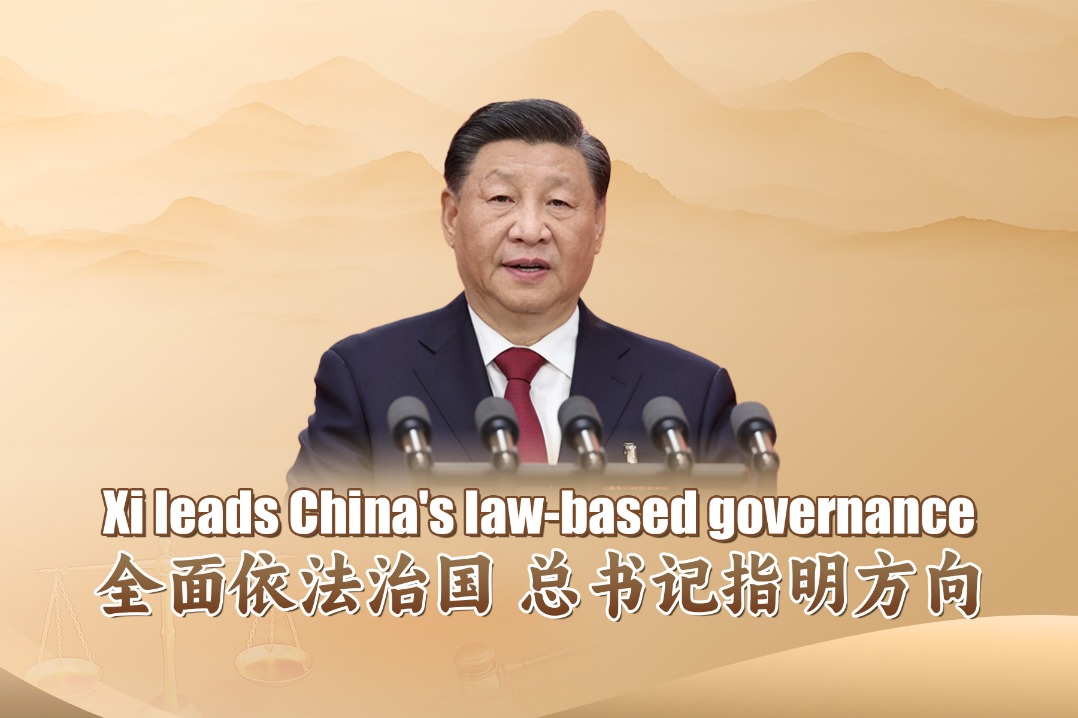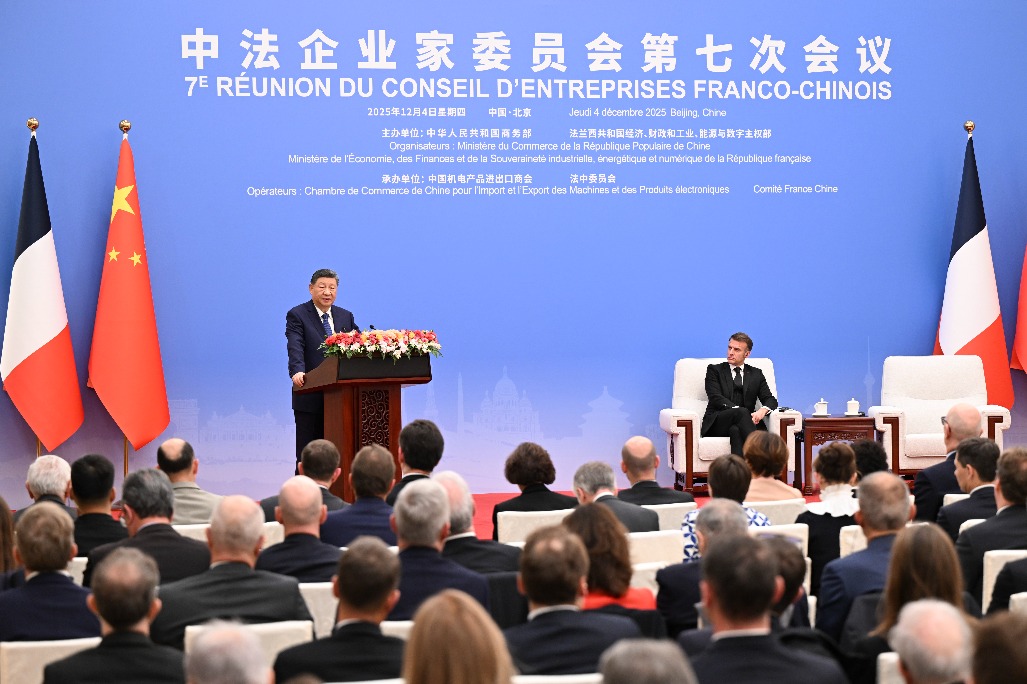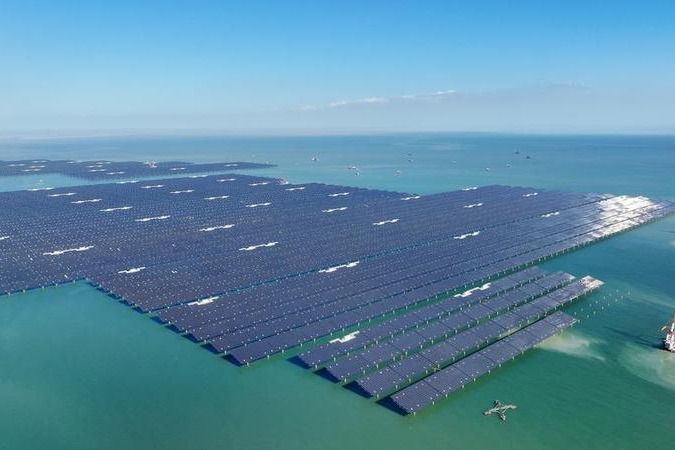Regional trade sees healthy growth despite COVID-19
Exchange of goods, services with ASEAN reaches $367b in first seven months as business facilitation measures unveiled by China promote cooperation

HONG KONG-"I want more Chinese traders to buy our fresh, sweet and succulent dragon fruit,"Nguyen Huy Phong, a 50-year-old farmer from Vietnam's southern Binh Thuan province, told Xinhua.
In the first half, China's trade with Vietnam jumped 18.1 percent year-on-year, pushing their bilateral trade to the top slot among members of the Association of Southeast Asian Nations, said the General Administration of Customs.
In addition, China's trade with ASEAN stood at 2.51 trillion yuan ($367 billion) in the first seven months, up 6.6 percent year-on-year.
ASEAN remained China's biggest trading partner during the same period, accounting for 14.6 percent of its total foreign trade volume.
While the COVID-19 pandemic has caused disruption in global supply chains, China-ASEAN trade relations "are being further boosted by great efforts from the two sides, including governments who are determined to find measures to maintain trade flow and eliminate COVID-19 impact, and the businesses themselves who are committed to the potential markets", said Vo Tri Thanh, former deputy head of Vietnam's Central Institute for Economic Management.
Multilateral moves
"Multilateral trade is still an irresistible trend," said Azlimi Zakaria, consul general of the Consulate General of Malaysia in Nanning, the Guangxi Zhuang autonomous region, adding that the increasingly close economic and trade relations between ASEAN and China remain vigorous due to multilateralism and free trade.
The expansion in China-ASEAN trade has been partly buoyed by the implementation of an upgraded China-ASEAN Free Trade Area protocol since October 2019, which has further facilitated agricultural trade and brought dividends to CAFTA members.
"The revised deal covering 11 countries with a population of around 2 billion people helps to simplify many procedures, including rules of origin, currency, services, and investment," Thanh said.
Founded in 1967, ASEAN now groups Brunei, Cambodia, Indonesia, Laos, Malaysia, Myanmar, the Philippines, Singapore, Thailand and Vietnam.
John Tan, a coconut exporter based in Davao in the southern Philippines, told Xinhua that he received orders for tropical fruit from China as usual despite the COVID-19 outbreak.
"I'm not short of orders, but I'm short of hands," said Tan, president of Eng Seng Food Products, adding that he did not have enough workers due to COVID-19 lockdown measures.
"Even under these circumstances, we are still managing to send about five to six containers of coconuts to China every week," he added.
During a virtual Regional Comprehensive Economic Partnership ministerial meeting on Aug 27, ministers of ASEAN members-along with China, Japan, South Korea, Australia and New Zealand-reaffirmed their commitment to signing the deal at its upcoming November summit.
Initiated by ASEAN in 2012, RCEP is a proposed FTA between the 10 ASEAN member states and their six partners-China, Japan, South Korea, Australia, New Zealand and India. In November, 15 participating countries of the agreement concluded text-based negotiations and essentially all market access issues at an RCEP summit in Bangkok.
Federation of Malaysian Manufacturers President Soh Thian Lai said it was important for ASEAN such as Malaysia to commit itself to the agreement in the interest of future economic development, especially while facing the economic aftermath of COVID-19.
"I believe the signing of such a mega FTA like RCEP will greatly contribute to the region's post-pandemic recovery and in creating resilient supply chains," he told Xinhua.
Cambodian Commerce Ministry Secretary of State and Spokesman Seang Thay said the RCEP will provide participating countries with greater market access, and relationships in terms of economy, trade and investment between ASEAN and its partners will be further broadened.
"Once signed, the RCEP will be the world's largest FTA by population. All countries will benefit from it," he said.
The RCEP accounts for 45 percent of the world's population, 40 percent of global trade and around one third of the world's gross domestic product.
Digital advances
This year is designated as the China-ASEAN Year of Digital Economy Cooperation, and the pandemic has further highlighted the importance of the digital economy in economic recovery, job creation and improved livelihoods.
On Aug 18, the Guangxi Zhuang autonomous region and ASEAN agreed to build the China-ASEAN Digital Trade Center to boost digital economy cooperation.
Headquartered in Nanning, the center is designated as a digital economy development park, with facilities for digital creative industries, platform operations, big data and the internet of things, among others.
As ASEAN strive to help their pandemic-hit economies, Chinese e-commerce giants such as Alibaba and JD have provided businesses with access to one of the world's largest markets.
On June 9, Thai Deputy Prime Minister and Commerce Minister Jurin Laksanawisit helped sell nearly 5,000 durians and 20,000 coconuts to Chinese consumers via livestreaming on Alibaba's Tmall.
With China's appetite for the pungent "king of fruits" undiminished by the pandemic, the Thai ministry said durian sales to China reached $1.02 billion in the first half, up 140 percent year-on-year.
Since June last year, Malaysia-also a major durian producer in Southeast Asia-started exporting durians to China as frozen whole fruits, mainly through e-commerce platforms. The Chinese market has helped Malaysian farmers during the economic recovery.
Lu Yee Thing, a durian farmer in Malaysia's central Pahang state, told Xinhua that durian shipments to China have increased to 50 percent of the farm's total exports.
"Many Chinese consumers order our durians directly online," he said."I'm very confident in future business, and I will expand planting areas to meet the demand of the Chinese market."
The digital economy is expected to increase from 1.3 percent of GDP in 2015 to 8.5 percent by 2025, according to Secretary-General of the bloc Lim Jock Hoi.
High-tech alliances
In addition to traditional trade, China and ASEAN are also conducting high-tech industry cooperation.
China-ASEAN Information Harbor Co Ltd, a Nanning-based info-tech company, has been dedicated to China-ASEAN digital and information industrial collaboration over the past few years.
Three international communication submarine cables, 12 international terrestrial optical cables, and 13 key communications nodes have been built to link China and ASEAN, the company said.
Moreover, China and ASEAN have cooperated in satellite navigation before China's BeiDou Navigation Satellite System was commissioned on July 31.
China has begun to provide navigation services to some ASEAN economies, and will promote the socioeconomic development of ASEAN, especially in the fields of modern agriculture, digitization and intelligent ports, said Ran Chengqi, director of the China Satellite Navigation Office.
Relying on each other's advantages, governments and enterprises from China and ASEAN have promoted and realized mutual investment.
The Malaysia-China Kuantan Industrial Park in Malaysia has been jointly developed by the two countries as a major project under the China-proposed Belt and Road Initiative.
MCKIP and China-Malaysia Qinzhou Industrial Park have been identified by the Malaysian and Chinese governments as iconic projects in their bilateral investment.
According to the Ministry of Commerce, accumulated two-way investment between ASEAN and China reached $236.91 billion in 2019.
Xinhua


Today's Top News
- Tokyo urged to specify its past commitments
- Cooperation conducive to steadying progress in China-France partnership: China Daily editorial
- Shenzhou XXI crew set for first extravehicular activities
- Xi, Macron attend China-France Business Council meeting
- China expected to prioritize boosting consumption and domestic demand in 2026, expert says
- Xi, Macron jointly meet press






























